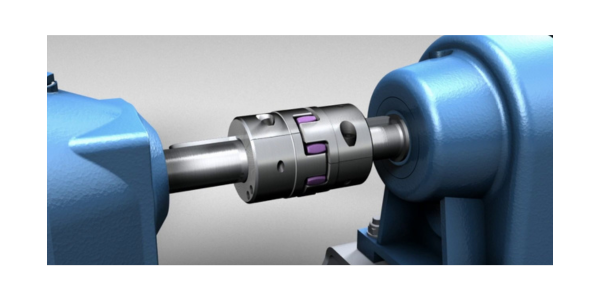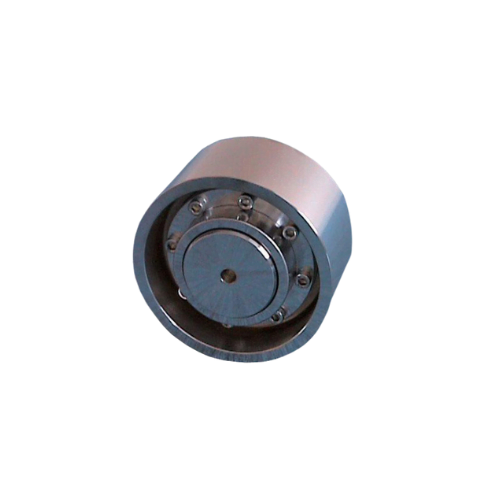Jaw Coupling Installations: by Coupling House
Inspect Components: Before installation, inspect the coupling hubs, spider (the flexible insert), and any associated parts for damage or defects.
Prepare Shaft Ends: Clean the shaft ends thoroughly to remove any debris or contaminants that could affect coupling performance.
Position Coupling Hubs: Slide one coupling hub onto each shaft end. Ensure that the hubs are facing each other with a small gap between them to accommodate the spider.
Insert Spider: Place the spider between the hubs, ensuring that it fits snugly into the jaws of both hubs. Make sure the spider is properly aligned with the shafts.
Tighten Set Screws: Use an appropriate tool to tighten the set screws on each hub. Alternate between screws to ensure even pressure, but avoid over-tightening, as this can damage the spider.
Check Alignment: Verify that the shafts are properly aligned. Misalignment can cause premature wear and failure of the coupling and connected equipment.
Run Test: After installation, run a test to ensure smooth operation and check for any unusual noises or vibrations. Make any necessary adjustments to alignment or tightness.
Secure Fasteners: Once satisfied with the installation and performance, secure any additional fasteners or locking mechanisms according to the coupling's design.
Regular Maintenance: Periodically inspect the coupling for signs of wear or damage and perform any necessary maintenance to ensure continued reliable operation.
Shaft Alignment: Proper shaft alignment is crucial for the performance and longevity of the coupling and connected equipment. Use alignment tools such as dial indicators or laser alignment systems to ensure the shafts are aligned within acceptable tolerances.
Torque Specifications: Follow the manufacturer's recommended torque specifications when tightening the set screws on the coupling hubs. Over-tightening can distort the hubs or damage the spider, while under-tightening can lead to slippage and premature wear.
Lubrication: Some jaw couplings may require lubrication to reduce friction and wear on the spider and hubs. Apply a small amount of compatible lubricant to the mating surfaces of the hubs and spider according to the manufacturer's recommendations.
Temperature Considerations: Take into account the operating temperature of the application when selecting a jaw coupling and during installation. High temperatures can affect the performance of the coupling material and lubrication, potentially leading to failure.
Environmental Factors: Consider any environmental factors that may impact the installation or performance of the coupling, such as exposure to moisture, chemicals, or abrasive materials. Choose a coupling material and design suitable for the application conditions.
Safety Precautions: Always observe safety precautions when working with rotating machinery and couplings. Use appropriate personal protective equipment, and ensure that the equipment is properly de-energized and locked out before beginning installation or maintenance.
Documentation and Record-Keeping: Keep detailed records of the installation process, including torque values, alignment measurements, and any adjustments made. This information can be valuable for future maintenance and troubleshooting.
Professional Assistance: If you're unsure about any aspect of the installation process or encounter difficulties, don't hesitate to seek assistance from a qualified engineer or technician experienced in coupling installations. They can provide guidance and ensure that the coupling is installed correctly.
Always refer to the specific manufacturer's instructions and recommendations for your particular jaw coupling model, as installation procedures may vary. If unsure, consult with a qualified technician or engineer familiar with coupling installations.
- Jaw couplings offer exceptional durability, versatility, and ease of installation, making them ideal for various industrial applications.
- Signs of wear, such as excessive vibration, misalignment, or audible noise, indicate the need for coupling replacement.
- Yes, lubrication is essential for reducing friction and extending the coupling's lifespan. Use lubricants recommended by the manufacturer.
- Wear appropriate protective gear, follow lockout/tagout procedures, and avoid overloading the coupling to ensure safety.
- Regular inspections are recommended to detect any signs of wear or misalignment promptly. Follow a maintenance schedule based on equipment usage.
- Check for overloading or lack of lubrication. Address the underlying issue and allow the coupling to cool before resuming operation.


























